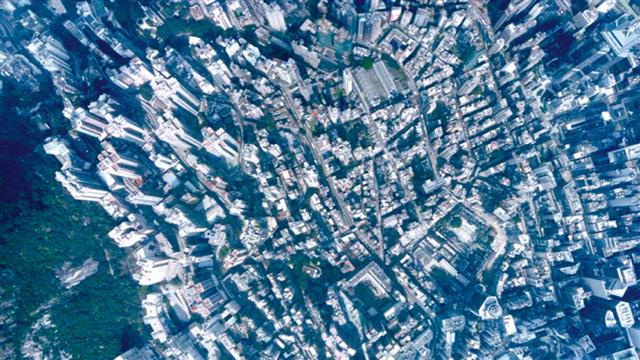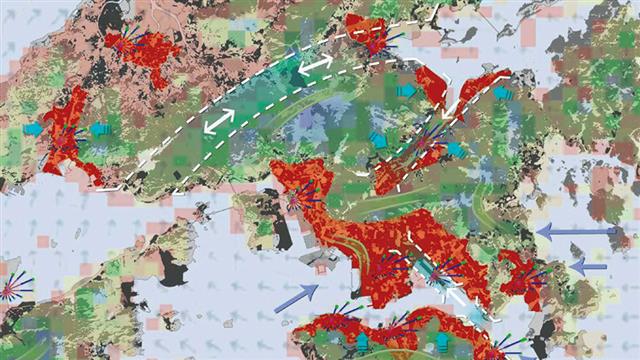City Planning for Healthy Living
The programmes offered at the School of Architecture adopt a humanistic approach, a path chosen by Prof. Tunney Lee, founding chairman of the then Department of Architecture. The research conducted at the School advocates the achievement of a sustainable environment in the region. It has been the result of the work of teachers and researchers of the School that more scientific considerations are now incorporated in the planning process for city development.
A unique local problem with international implications
One of the School’s many achievements is the development of the Hong Kong Urban Climatic Map. Hong Kong is a high density city situated in the sub-tropical climate region. It is hotter in the city and, despite our well-endowed wind environment, there is hardly any breeze due to our tall buildings and high density urban environment. The result is poorer living quality because of heat stress and related health problems and increase in energy consumption. How can one translate all these subjective feelings into objective parameters to enable city planners to deliver a higher quality urban environment? The project “Urban Climatic Map and Standards for Wind Environment – Feasibility Study” (“UCM Study”) did exactly that in 2006. An international research team from different disciplines and affiliations joined Prof. Edward Ng Yan-yung on the UCM Study which focused on two climatic factors, Wind and Urban Thermal Control.
The Urban Climatic Map
Over the years the School had been invited by the Government to study the lighting and ventilation requirements of buildings and then the relationship between health and living environment. Such studies had resulted in regulations and guidelines in lighting and ventilation requirements of buildings.
The UCM Study went further and collated scientific data on the effects of the city fabric, including topography, layout and buildings, on wind and thermal comfort in city planning. The Study further provided an Urban Climatic Analysis Map and an Urban Climatic Planning Recommendation Map to facilitate strategic planning to achieve long-term improvement of urban living.
The Study identified five Urban Climatic Planning Zones and different planning recommendations were made. Detailed planning and design measures were also suggested in project planning and formulation of development parameters to improve urban climate by increasing air permeability and lowering air temperature, such as reducing frontage areas of buildings, controlling building heights and ground coverage and building setback. These will enable city planners to balance urban climatic factors with other planning conditions when making strategic/district plans.
The project was completed in April 2013 and was widely reported and published. It was also awarded the Hong Kong Institute of Planners Awards 2012—Merit Award. This “local” study has wide implications and can be applied to other densely populated cities in the world. The School is now the de facto consultant to governments seeking opinions on city planning and has provided consultancy for municipal governments in China, Macau, Singapore and the Netherlands.
From research to society
The School has also taken steps to pass on the knowledge gained through research and consultancies. It offers an MSc in Sustainable Environmental Design and other programmes, bringing theory and practice in green and sustainable architectural design to stakeholders in the construction and building industry, thus completing the full cycle from research to knowledge transfer.
The Basics
The Benchmarks







